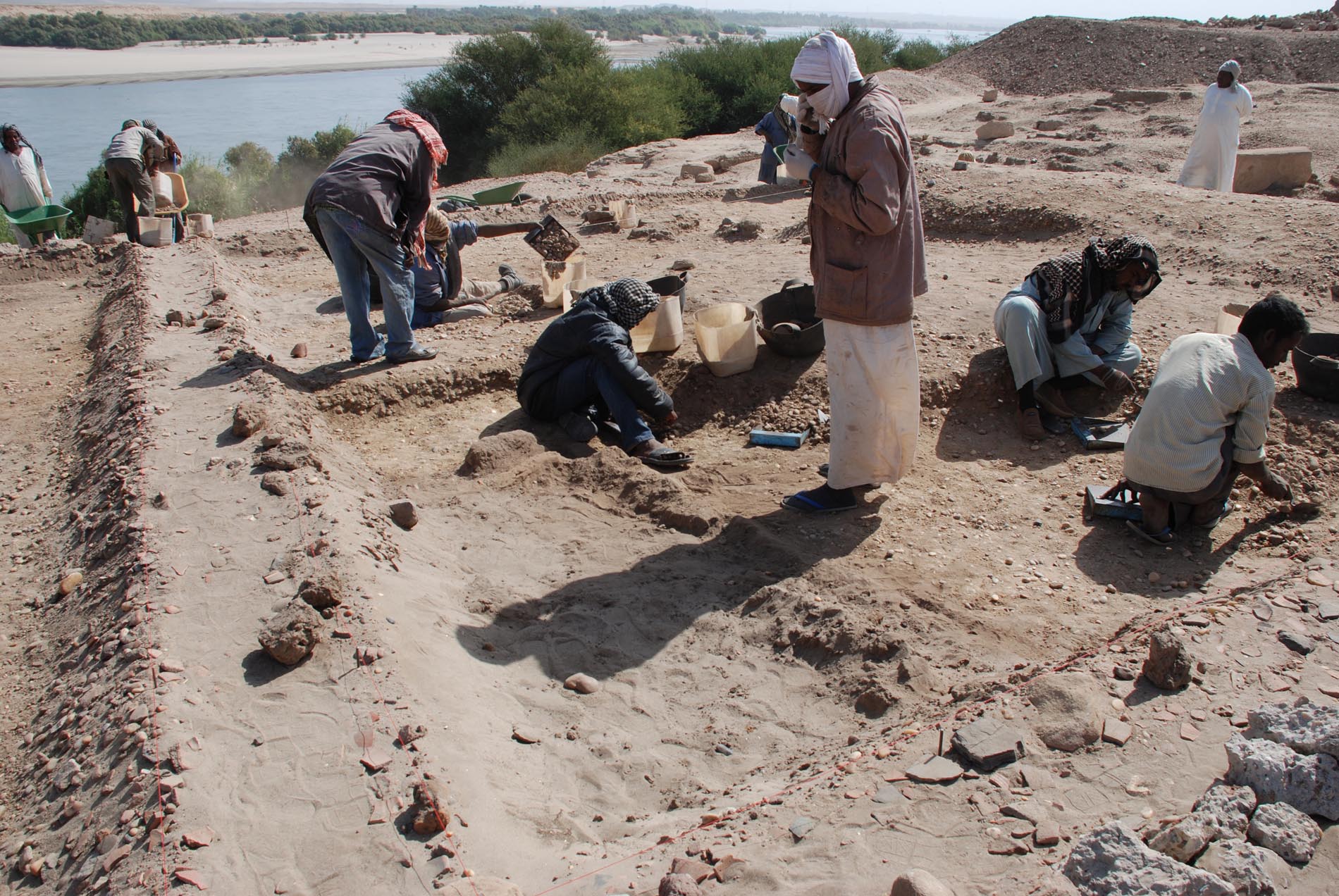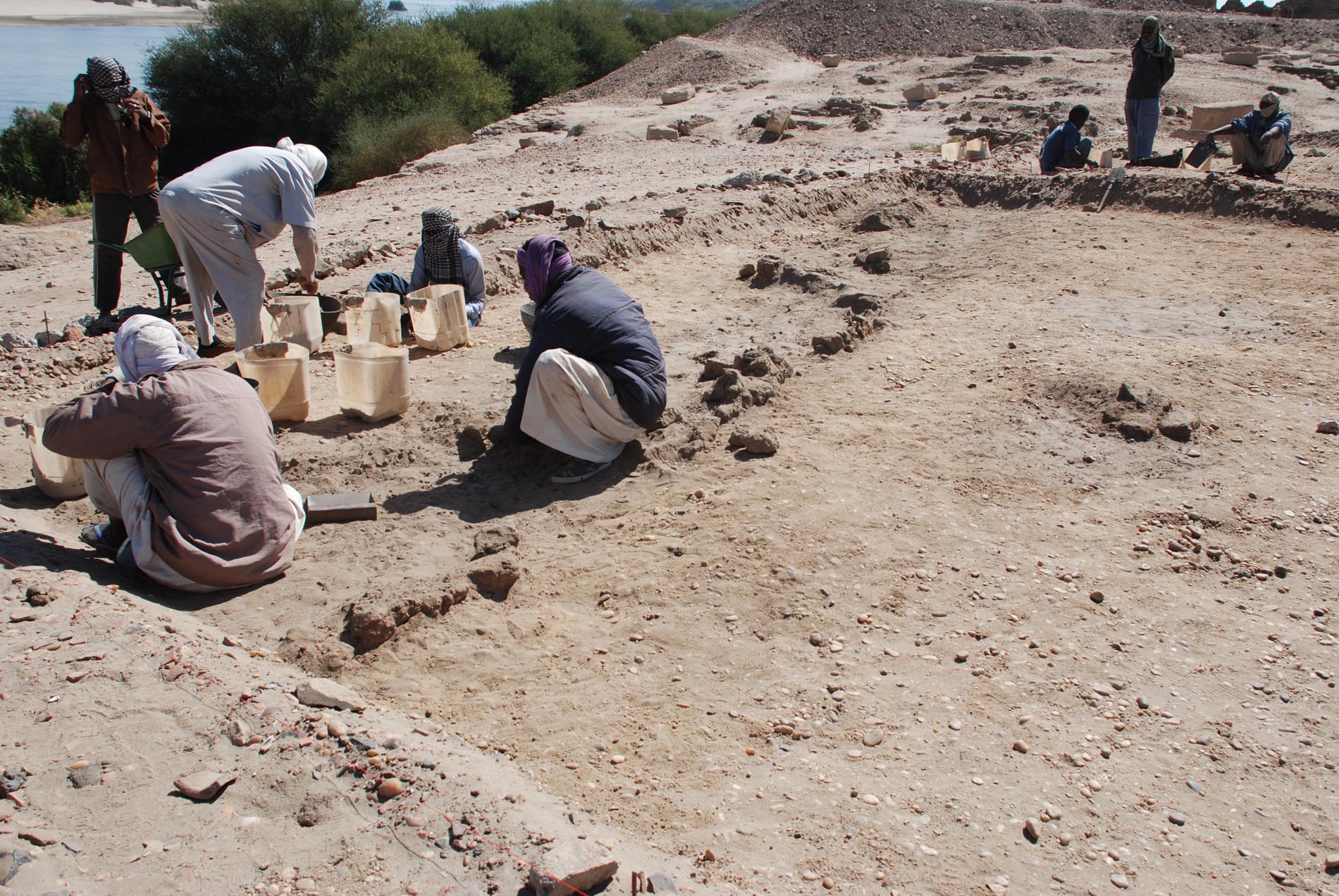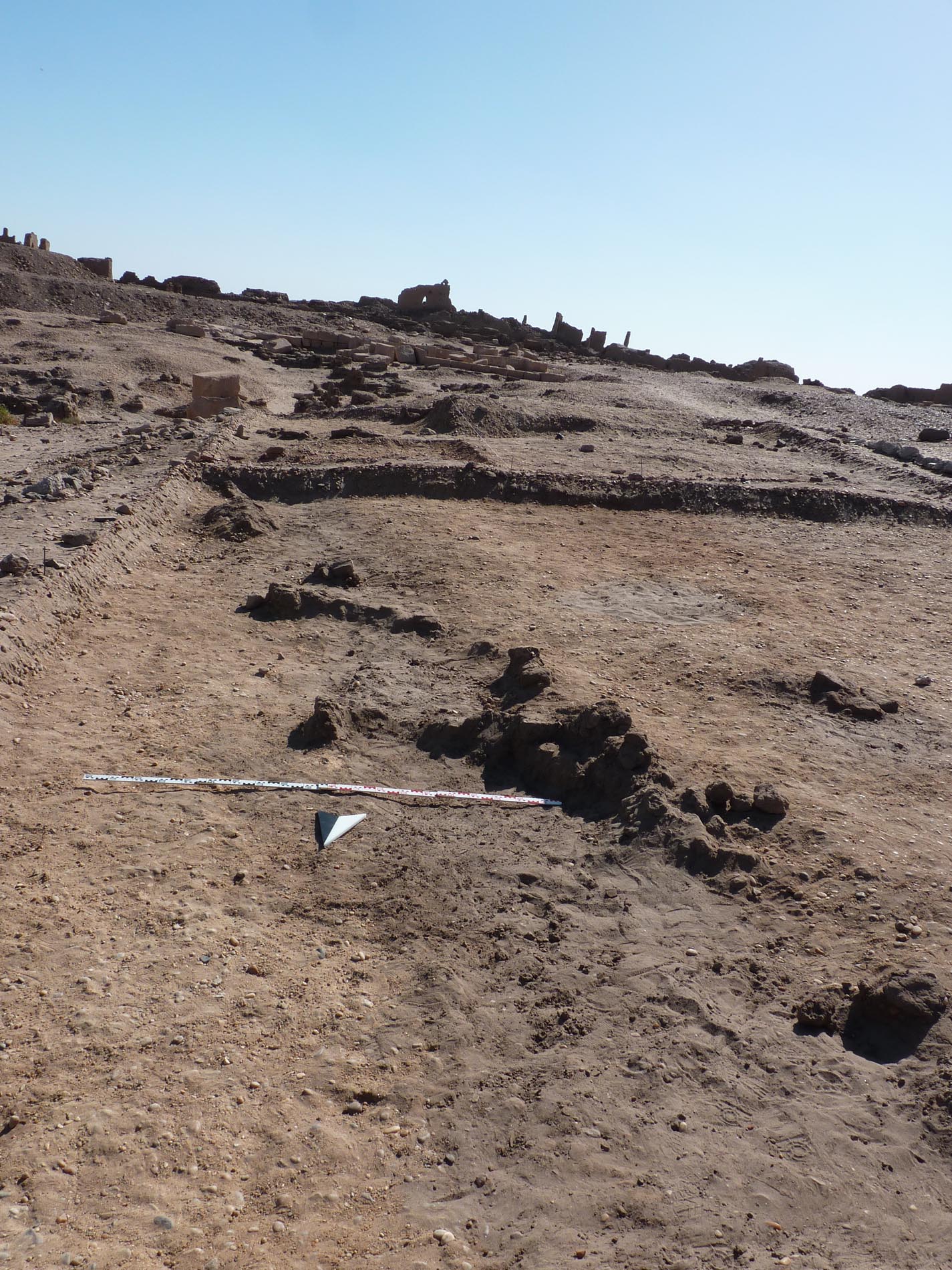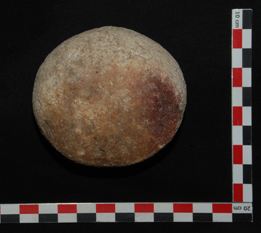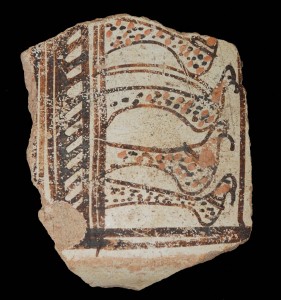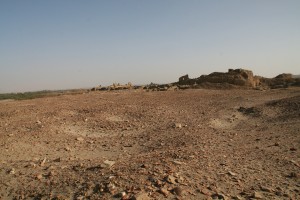Just before closing for the weekend, we started cleaning a small storage bin set against a gravel deposit in the south eastern part of Square 2. It is located outside of our main building (Building A) and was found with what seemed to be original filling material.
Mohammed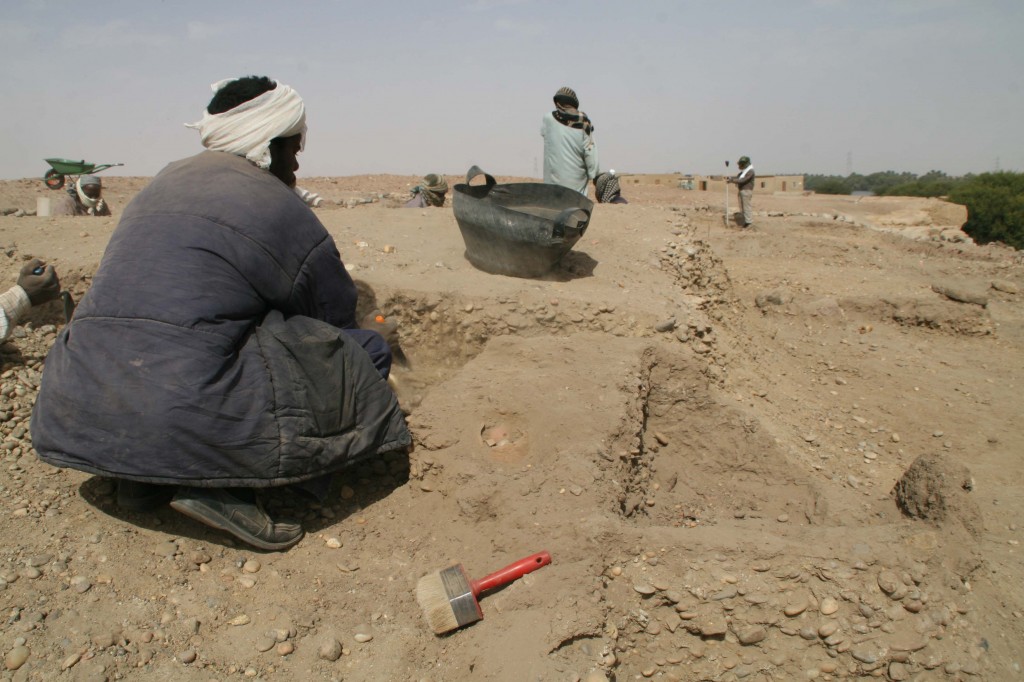 did a very good job working on this fragile structure, brushing its outline and exposed carefully the upper part of a 18th Dynasty beaker with a smaller vessel inside. These vessels are still in place where they have been left c. 3400 years ago!
did a very good job working on this fragile structure, brushing its outline and exposed carefully the upper part of a 18th Dynasty beaker with a smaller vessel inside. These vessels are still in place where they have been left c. 3400 years ago!
We will continue here on Saturday and empty the bin, but the find is indeed exciting and just a perfect closing of a sucessful week: in situ material from the original use of this structure confirms our proposed dating of the New Kingdom activity in this area to the early 18th Dynasty! 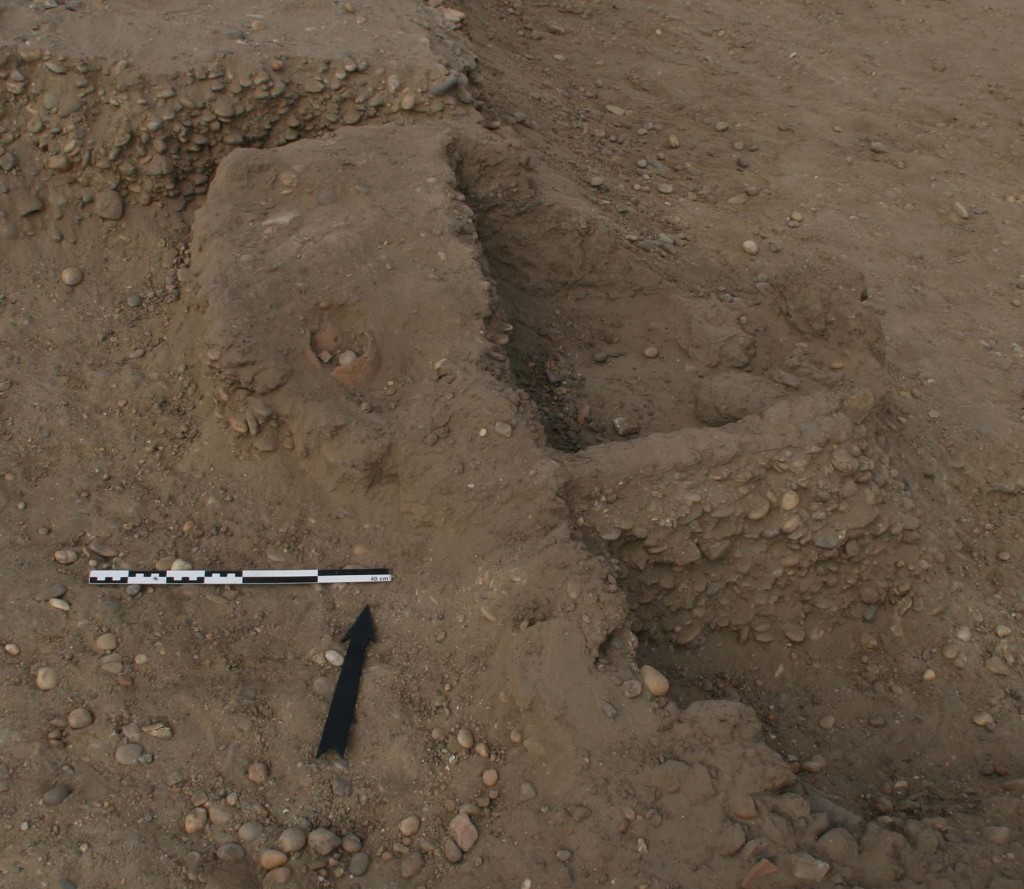
We will know more once the complete vessels have been taken out and processed – and we will keep you posted!

